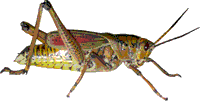Entomology Collections, General

Entomology Papers from Other Sources
Document Type
Article
Date of this Version
1978
Abstract
Recent field experiments demonstrated the possibility of using the sterile male method for the control of Anopheles albimanus Wiedemann, the most impor- tant vector of human malaria in Central America. Until now there was no practical method for excluding females from the releases of sterile males. A genetic method was developed for the preferential elimination of females during any of the four life stages. This genetic sexing system utilizes propoxur (o-isopropoxyphenyl methyl- carbamate) susceptibility as a recessive conditional lethal, a T(Y:2R) translocation, and an In(2R) inversion. The propoxur resistance allele (dominant) was linked to the Y chromosome via a radiation-induced translocation, and genetic recombination was suppressed by inversions. In one of the strains produced, 99.7 percent of the females are eliminated when treated with propoxur, without male loss.


Comments
Published in Science, New Series, Vol. 200, No. 4347 (Jun. 16, 1978), pp. 1303-1304.